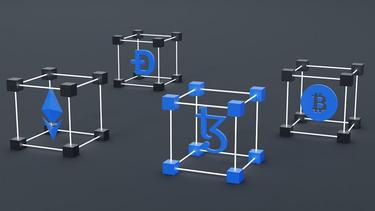What are virtual assets?
Virtual assets[1] represent a broad category of digital resources that have value in digital and real-world contexts. These assets encompass digital currencies[2], digital rights[3], and other online assets that can be owned, bought, sold, or exchanged. Virtual assets are characterized by their digital form, reliance on the internet for transactions, and the use of cryptography[4] for security. Unlike physical assets, virtual assets exist only in digital form and are often governed by the rules and regulations of digital platforms or networks on which they operate.The significance of virtual assets lies in their ability to facilitate new forms of economic activity[5], enabling transactions that are faster, more secure, and potentially more inclusive than traditional financial systems[6]. However, the digital nature of these assets also raises challenges related to security, regulation, and the potential for market volatility[7].
Evolution and Impact
The evolution of virtual assets marks a significant shift in the digital economy, highlighting the growing interconnection between technology and finance. This transformation is propelled by advancements in blockchain[8] technology and the proliferation of the internet, which have collectively facilitated the creation, distribution, and management of these assets on a global scale. Virtual assets have disrupted traditional financial systems and business models, offering an alternative that promises increased efficiency, transparency[9], and security.
Types of Virtual Assets
- Digital Currencies: Virtual or electronic money that exists only in digital form.
- Utility Tokens: Provide access to a service or product facilitated by blockchain.
- Security Tokens[10]: Represent ownership or a stake in an asset, promising future returns.
- Non-Fungible Tokens (NFTs): Unique digital assets that represent ownership of specific digital or physical items.
Digital Currencies: These are virtual or electronic money that exists in digital form. Examples include cryptocurrencies[11] like Bitcoin[12] and Ethereum[13], which utilize blockchain technology to secure transactions and control the creation of new units.
Utility Tokens: Tokens that provide access to a specific product or service on a platform using blockchain technology.
Security Tokens: Digital tokens that represent ownership or a stake in an asset or an enterprise, with the promise of future profits in the form of dividends, revenue shares, or price appreciation.
Non-Fungible Tokens (NFTs): Unique digital assets that represent ownership of specific items or content, leveraging blockchain to authenticate and verify ownership of digital art, collectibles, and other unique items.
Legal and Regulatory Framework
The rapid growth of virtual assets has prompted regulatory bodies worldwide to develop frameworks for their oversight. These regulatory measures aim to protect investors, ensure market integrity, and prevent illegal activities such as money laundering[15] and financing of terrorism. However, the decentralized nature of many virtual assets poses significant challenges to traditional regulatory approaches, necessitating innovative legal solutions.
Challenges and Opportunities
While virtual assets offer numerous opportunities for innovation and economic growth, they also pose challenges related to security, regulatory compliance[16], and market volatility. The digital nature of these assets makes them susceptible to cybersecurity risks, including hacking and fraud. Additionally, the lack of a comprehensive regulatory framework can lead to uncertainty and instability in the virtual asset markets.
Virtual assets represent a broad category of digital assets that have transformed the way we perceive value, ownership, and exchange[17] in the digital age. Unlike traditional assets, which are physical and tangible, virtual assets exist in digital form and are accessible through computer networks. They encompass a wide range of items, from cryptocurrencies and digital tokens to virtual goods in online games and digital collectibles. Understanding virtual assets requires an exploration of their types, uses, benefits, and challenges, as well as their regulatory landscape[18].
Definition and Types of Virtual Assets
Virtual assets are digital representations of value that can be traded, stored, or transferred electronically. They include cryptocurrencies like Bitcoin and Ethereum, which are digital or virtual currencies that use cryptography for security. Other types of virtual assets are utility tokens, which grant access to services or benefits within a specific ecosystem; security tokens, which represent investments in real-world assets; and non-fungible tokens (NFTs), which are unique digital assets that cannot be exchanged on a one-to-one basis, often used to represent ownership of art, collectibles, and other unique items.
Uses and Applications
Virtual assets serve various purposes across multiple domains. Cryptocurrencies, for instance, are used for payments, remittances, and as a store of value. Utility tokens enable participation in decentralized applications (dApps) and access to blockchain-based services. NFTs have found popularity in the art world, gaming, entertainment, and beyond, allowing for the digital certification of authenticity and ownership of unique digital items and experiences.
Benefits of Virtual Assets
The rise of virtual assets is driven by several advantages. They offer a high degree of transparency and security due to the underlying blockchain technology, ensuring that transactions are immutable and verifiable. The decentralized nature of virtual assets reduces reliance on traditional financial intermediaries, lowering transaction costs and increasing accessibility. Virtual assets also enable the tokenization[19] of physical and digital goods, creating new opportunities for investment, ownership, and exchange in a digital format.
Challenges and Risks
Despite their benefits, virtual assets are not without challenges. Volatility[20] is a significant issue, with the value of many virtual assets subject to rapid fluctuations. Regulatory uncertainty[21] and varying legal frameworks across jurisdictions complicate the adoption and use of virtual assets. Security concerns, while mitigated by blockchain technology, also exist, including the risk of hacking and fraud. Moreover, the anonymity[22] and borderless nature of virtual assets can facilitate illicit activities if not properly monitored.
Regulatory Landscape
The regulatory environment[23] for virtual assets is evolving as authorities attempt to balance innovation with consumer protection[24] and financial stability[25]. Regulations vary by country, with some embracing virtual assets and others imposing strict controls or outright bans. Key regulatory concerns include anti-money laundering (AML), counter-terrorism financing (CTF), taxation, and ensuring the integrity of markets. As virtual assets continue to gain prominence, the development of clear, consistent, and supportive regulatory frameworks will be crucial for their sustainable growth.
The Future of Virtual Assets
The future of virtual assets looks promising, with ongoing advancements in blockchain technology and growing interest from both retail and institutional investors. The expansion of virtual asset applications, from decentralized finance (DeFi) to digital identity and beyond, suggests that they will play a significant role in the future digital economy. However, achieving widespread adoption and integration into the global financial system will require addressing the existing challenges and ensuring that virtual assets can be used safely, responsibly, and inclusively.
In conclusion, virtual assets are reshaping the landscape of digital value and ownership, offering innovative ways to transact, invest, and express digital identity. As this space continues to evolve, understanding the complex interplay between technology, regulation, and market dynamics will be essential for navigating the future of virtual assets.
- Virtual Assets — Digital resources that have value in their use or as an investment, including cryptocurrencies and NFTs.
- Digital currencies — Digital forms of money that exist only in electronic form, not in physical form like coins or notes.
- Digital rights — Rights that allow individuals to own, use, and distribute digital content under specific conditions.
- Cryptography — The practice of securing communications to prevent third parties from reading them, used in digital currencies for securing transactions.
- Economic activity — Any action that involves the production, distribution, and consumption of goods and services.
- Financial systems — Complex systems comprising different institutions, including banks, markets, currencies, and policies, that support economic activities.
- Market Volatility — The rate at which the price of a cryptocurrency increases or decreases for a given set of returns.
- Blockchain — A decentralized digital ledger recording cryptocurrency transactions across multiple computers.
- Transparency — The characteristic of blockchain technology that allows all transactions to be visible and verifiable by all network participants.
- Security Tokens — Digital tokens that represent ownership or an interest in real-world assets, subject to regulatory compliance.
- Cryptocurrencies — Digital or virtual currencies that use cryptography for security and operate on a decentralized system, unlike traditional currencies.
- Bitcoin — The first and most well-known cryptocurrency, was introduced in 2009 by Satoshi Nakamoto, who developed Bitcoin.
- Ethereum — A blockchain platform with its own cryptocurrency, Ether, is known for smart contract functionality.
- Regulatory Framework — A set of regulations and guidelines established by authorities that govern the operation of financial markets and instruments.
- Money Laundering — The process of making large amounts of money generated by a criminal activity appear to be legally obtained.
- Regulatory Compliance — Adherence to laws, regulations, guidelines, and specifications relevant to business processes.
- Exchange — A platform where individuals can buy, sell, or trade cryptocurrencies for other digital currency or traditional currency.
- Regulatory Landscape — The set of laws, guidelines, and policies that govern the use of virtual assets across different regions.
- Tokenization — The process of issuing a blockchain token that digitally represents a real tradable asset.
- Volatility — Rapid and significant price movement, a common characteristic of cryptocurrencies.
- Regulatory Uncertainty — The lack of clear regulatory guidelines and frameworks governing the use and trading of virtual assets.
- Anonymity — The ability to maintain privacy over transaction and identity details within cryptocurrency transactions.
- Regulatory Environment — The legal and regulatory framework within which ICOs must operate, varying significantly by country.
- Consumer Protection — Legal measures and regulations aimed at safeguarding the rights and interests of consumers within the cryptocurrency market, including protection against fraud, misinformation, and market manipulation.
- Financial Stability — A requirement for license applicants to demonstrate sufficient financial resources to cover operational expenses and obligations to players.



